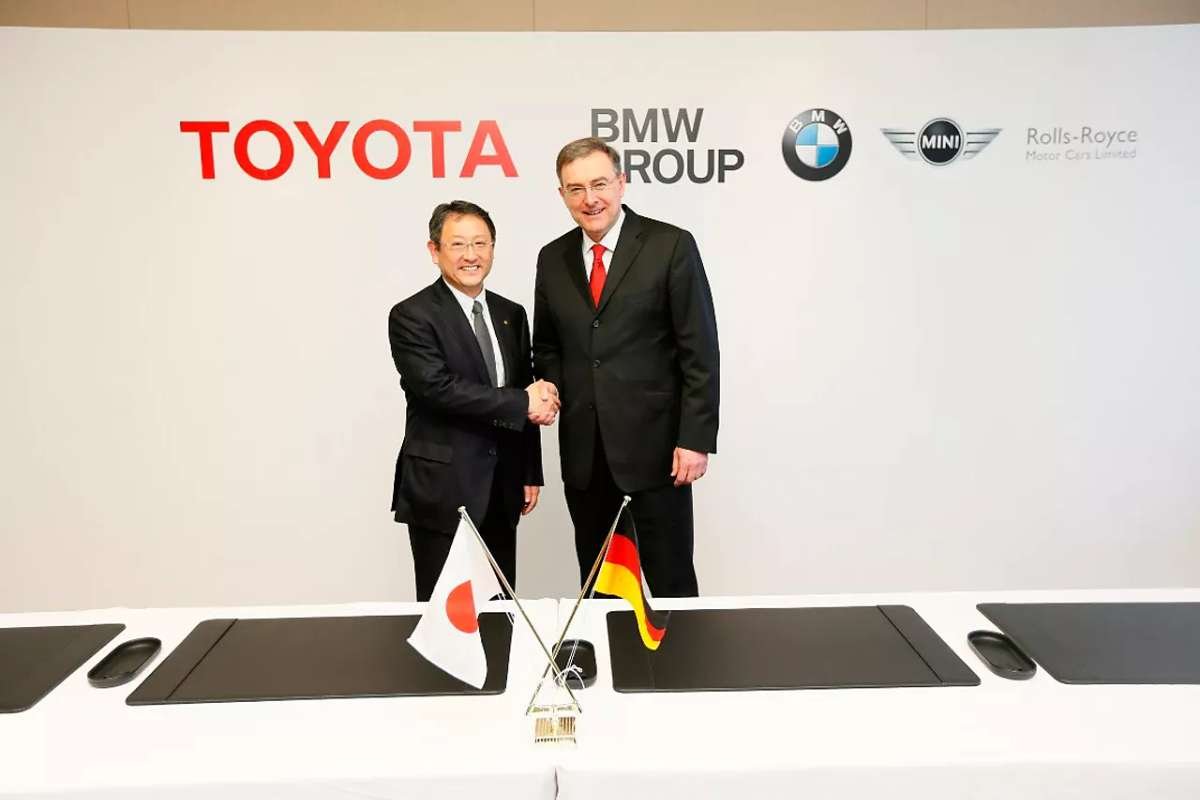Business can feel like running a marathon on a treadmill, lots of effort, no new ground. But imagine stepping off and running side by side with a partner who shares the energy, tools, and track. That’s the magic of a Strategic Alliance. It’s not about merging or losing control; it’s about building a win-win bridge that gets you ahead while sharing the heavy lifting. Let’s break down why these alliances matter, who nailed them, and what the numbers tell us about their impact.
What Is a Strategic Alliance?
A Strategic Alliance is when two or more businesses agree to work together while staying independent. They share resources, knowledge, or distribution channels for mutual growth. Unlike mergers, no one gives up ownership. The goal is simple: to compete better, grow faster, and cut costs.
For example, a software company may team up with a hardware maker. One offers the brains, the other the body, and together they bring customers a stronger product.
Strategic Alliance Types and Benefits
| Type of Strategic Alliance | Example | Main Benefits |
| Joint Venture | Sony + Ericsson = Sony Ericsson | Shared risk, faster market entry, and technology exchange |
| Equity Alliance | Renault–Nissan | Shared risk, technology exchange, cost saving |
| Non-Equity Alliance | Spotify + Uber | Faster market entry, more customers, cost savings |
Types of a Strategic Alliance
When companies team up, they usually do it in one of three ways. Each type of Strategic Alliance has its own style, benefits, and risks.
1. Joint Venture
A joint venture is like creating a new baby company. Two or more firms pool money, skills, and resources to form a separate business. Each partner owns a share and gets a piece of the profit.
- Example: Sony and Ericsson worked together in 2001 to form Sony Ericsson. Sony brought tech and gadgets, while Ericsson added its mobile expertise. The partnership produced some of the most popular phones of the early 2000s.
- Why it works: Both firms share costs and risks, but also get access to new markets.
- Risk: Conflicts may happen if partners disagree on management or vision.
2. Equity Alliance
In an equity alliance, one company buys a small percentage of another company’s shares. This creates a financial bond but doesn’t give full control. It’s a way to show commitment without merging.
- Example: Renault and Nissan formed an equity alliance where each company owns shares in the other. This move allowed them to share tech, platforms, and research while staying independent.
- Why it works: It builds trust and long-term cooperation since money is involved.
- Risk: If the partnership doesn’t perform, the invested company loses money.
3. Non-Equity Alliance

This is the simplest type. Companies just sign contracts or agreements to work together, no shares, no ownership, just collaboration. It often involves licensing, distribution, or co-marketing deals.
- Example: Spotify and Uber teamed up so riders could play their own playlists during trips. No ownership was exchanged, but both gained customers and brand loyalty.
- Why it works: It’s flexible, fast to set up, and doesn’t require major investment.
- Risk: Since there’s no ownership, the bond is weaker, and one partner may walk away anytime.
Benefits of a Strategic Alliance
Companies join forces for more than just money. A Strategic Alliance brings practical advantages that help them survive and grow.
- Shared Risk: Running a business alone can be expensive and risky. In an alliance, both companies split costs, failures, and responsibilities. For example, research and development in industries like cars or pharmaceuticals can cost billions, but alliances make it manageable.
- Faster Market Entry: Breaking into a new country or market is hard. Local laws, culture, and distribution networks take years to understand. Partnering with a company already established in that region speeds things up. For instance, Starbucks entered China by partnering with local firms.
- Technology Exchange: Two companies often bring different strengths. In a Strategic Alliance, they share knowledge, patents, and tools. This cross-learning pushes innovation faster. Car companies often share electric vehicle technologies to cut costs and launch products sooner.
- More Customers: Each company brings its own customer base. Together, they get double the exposure. A classic case is McDonald’s and Coca-Cola. People buying a meal at McDonald’s automatically get Coca-Cola products, making both brands stronger.
- Cost Saving: Alliances help reduce expenses by sharing logistics, marketing, and research costs. Instead of both firms running separate campaigns or delivery networks, they combine efforts. According to McKinsey, this sharing can reduce overall costs and increase profit margins.
Also Read: Business Alliances That Can Change the Way Companies Grow
Top Strategic Alliances That Changed Industries
1. Starbucks and PepsiCo
- What Happened: Starbucks wanted to go beyond coffee shops and enter the massive ready-to-drink market. Building a global distribution system from scratch would have been too costly and slow. PepsiCo, already a giant in soft drinks with trucks, warehouses, and retailer ties worldwide, became the perfect partner.
- Result: Together, they launched bottled Starbucks Frappuccino drinks and other cold coffee beverages that hit grocery stores, vending machines, and convenience shops. People who never stepped inside a Starbucks café could now taste its brand.
- Impact: Starbucks grew from a café-focused brand into a global beverage powerhouse. PepsiCo gained entry into the fast-growing premium coffee market. This Strategic Alliance helped Starbucks become a household name and gave PepsiCo a trendy new product line.
2. Spotify and Uber
- What Happened: Uber wanted to make rides more enjoyable, while Spotify was looking for new ways to keep users engaged. In 2014, the two companies struck a deal that allowed Uber riders to connect their Spotify playlists directly to the car’s speakers.
- Result: Passengers could take control of the music during their ride. Suddenly, Uber became more than just transportation; it became a personal experience. For Spotify, it meant millions of Uber riders got a reason to use the service daily.
- Impact: This Strategic Alliance deepened user loyalty for both brands. Uber stood out from competitors like Lyft, and Spotify showed it wasn’t just another music app; it was part of people’s lifestyles. The partnership also proved that small digital touches could completely reshape customer satisfaction.
3. Apple and Nike
- What Happened: Nike wanted to push into tech-driven fitness, while Apple wanted to add lifestyle appeal to its products. The first partnership in 2006 created the Nike+ iPod, which let runners track their performance. Later, they developed the Apple Watch Nike edition, combining advanced tech with sports fashion.
- Result: Customers could track their runs, monitor health stats, listen to music, and stay motivated, all in one sleek device. The products weren’t just tools but symbols of an active, modern lifestyle.
- Impact: Both brands reinforced their image as leaders in innovation and lifestyle. Nike became known as a digital fitness pioneer, while Apple turned the Apple Watch into a must-have for health and sports fans. This Strategic Alliance showed how blending fashion, fitness, and technology creates long-term brand loyalty.
4. BMW and Toyota

- What Happened: Automakers face huge costs when developing eco-friendly cars. In 2011, BMW and Toyota decided to share resources instead of competing separately. They joined forces on fuel cell systems, hybrid technology, and lightweight materials.
- Result: BMW benefited from Toyota’s leadership in hybrid and hydrogen fuel technology, while Toyota gained from BMW’s expertise in sports cars and engines. Together, they developed next-generation vehicles faster and at lower costs.
- Impact: Customers enjoyed better green technology, while both companies reduced financial risks. This Strategic Alliance also proved that even rivals can partner for sustainability, setting an example for the entire automotive industry.
5. Google and Luxottica (Ray-Ban)
- What Happened: Google launched Google Glass, a bold step into wearable tech. But it faced a big challenge; people thought the glasses looked awkward. Google needed style credibility. That’s when it partnered with Luxottica, the parent company of Ray-Ban and Oakley, known for fashionable eyewear.
- Result: Luxottica redesigned the glasses to look more appealing while Google kept its focus on the technology. The collaboration gave smart eyewear a chance to become mainstream.
- Impact: Even though Google Glass didn’t succeed commercially, the partnership had a lasting influence. It showed how important design is in technology adoption. Today’s smart glasses from Meta, Amazon, and others carry the lessons from this early Strategic Alliance.
Why Businesses Form a Strategic Alliance?
Companies don’t join hands just for fun. They do it because the rewards are bigger when they work together. A Strategic Alliance can be the difference between struggling to grow alone and thriving with the right partner. Here’s why businesses often choose this path:
1. Enter New Markets
When a company wants to step into a new country or region, it often faces two big problems: a lack of trust and a lack of local knowledge. Customers are more likely to buy from brands they already know. By forming a Strategic Alliance with a local business, the newcomer gains instant credibility.
Example: Fast-food chains often partner with local suppliers when moving into Asia or Africa. Instead of battling cultural differences, they use local expertise to adapt menus and win customers faster.
2. Share Costs
Research, development, and large-scale distribution cost a fortune. Going solo means carrying the entire financial burden, which can limit growth. In a Strategic Alliance, companies pool their money, resources, and talent. This makes ambitious projects possible without breaking the bank.
Example: Pharmaceutical companies often join forces when developing vaccines. The cost of clinical trials runs into billions, but shared investment means quicker progress and lower risk for each partner.
3. Boost Innovation
Two heads really are better than one. When companies bring together their strengths, like tech skills from one and marketing power from the other, innovation happens faster. A Strategic Alliance allows both to share ideas, patents, and technologies that might take years to develop alone.
Example: Think of how BMW and Toyota worked together on hybrid engines. Each brand had expertise in different areas, but combined, they created eco-friendly solutions at a pace that neither could achieve alone.
4. Speed Up Growth

Every company dreams of scaling quickly, but growth takes time when done alone. By teaming up, businesses instantly tap into each other’s customer base, sales networks, and distribution systems. This shortcut can shave years off expansion plans.
Example: When Starbucks teamed up with PepsiCo, it gained immediate access to Pepsi’s vast global distribution. Overnight, Starbucks’ products were on supermarket shelves worldwide, something it could never have done that fast on its own.
5. Strengthen Brand Image
A well-chosen partner can polish a brand’s reputation. Customers often judge companies by the company they keep. Aligning with a respected name signals strength, reliability, and quality. A Strategic Alliance can turn a good brand into a great one just by association.
Example: Apple’s partnership with Nike showed that Apple wasn’t only about tech, it was about fitness and lifestyle, too. This elevated both brands and made customers feel they were buying into a community, not just a product.
The Risks in a Strategic Alliance
Like any partnership, there are challenges:
- Unequal benefits can strain the relationship.
- Cultural or management clashes may slow projects.
- Intellectual property risks if one partner misuses knowledge.
That’s why smart contracts, clear goals, and trust are key.
Also Read:
- Business Collaboration 101: Joint Ventures vs Partnerships
- Why a Business Partnership Could Be Your Smartest Growth Move?
Conclusion
Business doesn’t have to feel like pushing a broken shopping cart uphill. With a Strategic Alliance, two brands share the push, fix the wheels, and reach the top together. From Starbucks and Pepsi to Apple and Nike, history shows that teamwork doesn’t just make the dream work; it makes the market work. So, if you’re running your business solo, maybe it’s time to lace up with a partner and sprint toward success.










